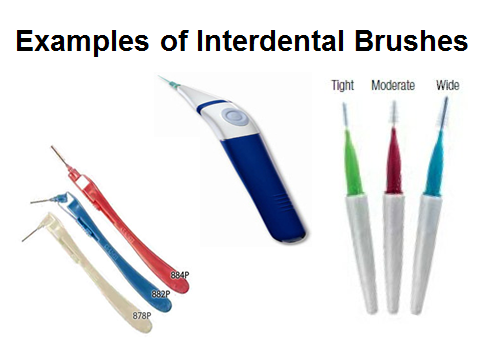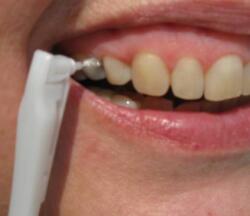
Best Practices
Interdental Brushes – a Safer Alternative to Flossing
Removing food and plaque from in between the teeth is a crucial part of mouth care. The areas between teeth are often where cavities and gum disease start, because that’s where food gets stuck and bacteria and plaque grow. For healthy, functional adults the best way to clean between the teeth is to use dental floss. However, for caregivers working with persons with cognitive and physical impairment, it is just too dangerous to put your fingers beyond the teeth, which is what you need to do to floss. There are devices that hold the floss for you, but they are not advisable in this population because they can be bit and break off, leading to a risk of being swallowed or ending up in the airway.
The preferred alternative is the interdental brush. Dozens of different types exist (see below for examples); they can be used to clean between the teeth, under bridges, and around implants and braces. All interdental brushes look like tiny bottle brushes with handles. They come in a variety of shapes and sizes, with the most popular style having a fine cylindrical head.

Technique for using an interdental brush (see photo). 
1. Place the head of brush at the angle needed for working in the person’s mouth.
2. Dip the brush in antimicrobial rinse.
3. Place the brush in between the teeth at the gum line and gently push back and forth in between teeth (in and out between the teeth). Never force the brush if the space is too tight for the brush. You can come in from the tongue side, but this is more difficult because of how the teeth come together.
4. Clean the brush by wiping it on gauze before brushing between the next set of teeth. Periodically re-dip the brush in antimicrobial rinse after wiping it clean.
5. Clean the brush after use and store it in an area where it can air dry.
Nurses Oral Health Assessment
After completing the Mouth Care Without a Battle training program, and viewing the Nurses Oral Health Assessment in Module 3, The Critical Role of Licensed Nurses in Mouth Care, licensed nurses should be able to assess the oral health condition of the people he/she cares for. The Oral Health Assessment Tool (Modified) form can be used for this assessment, and can be downloaded here.
Person-Centered Techniques for Resistive Behaviors
A list of person-centered techniques for providing mouth care to resistive residents can be downloaded here. If you discover additional techniques that have helped you or your organization, please let us know!